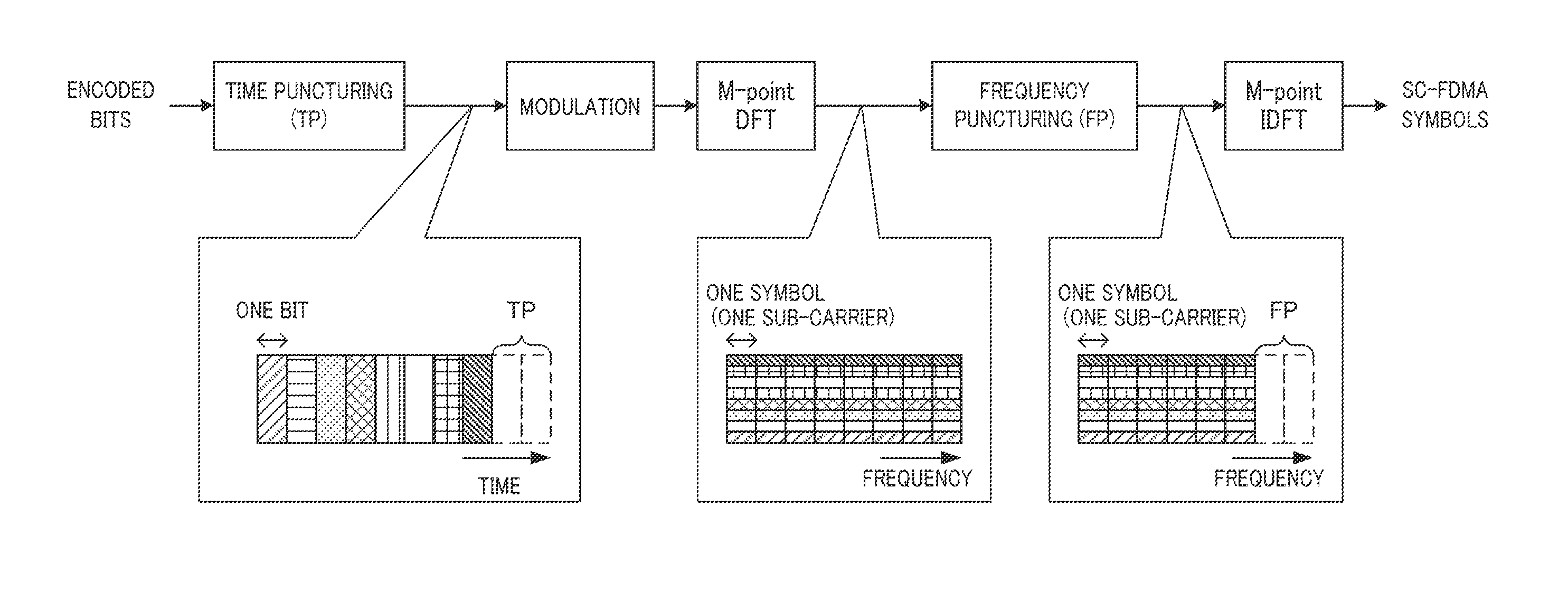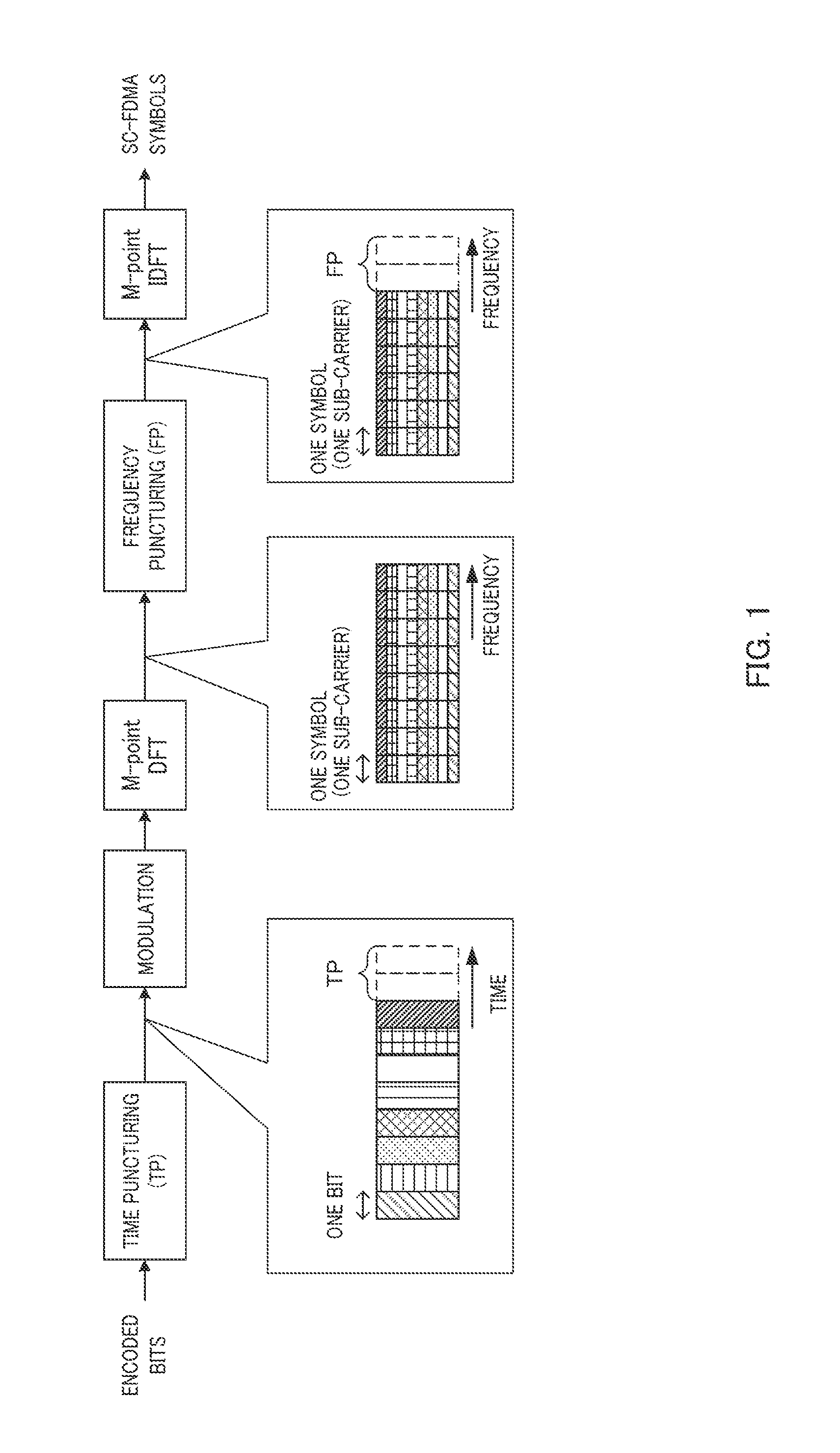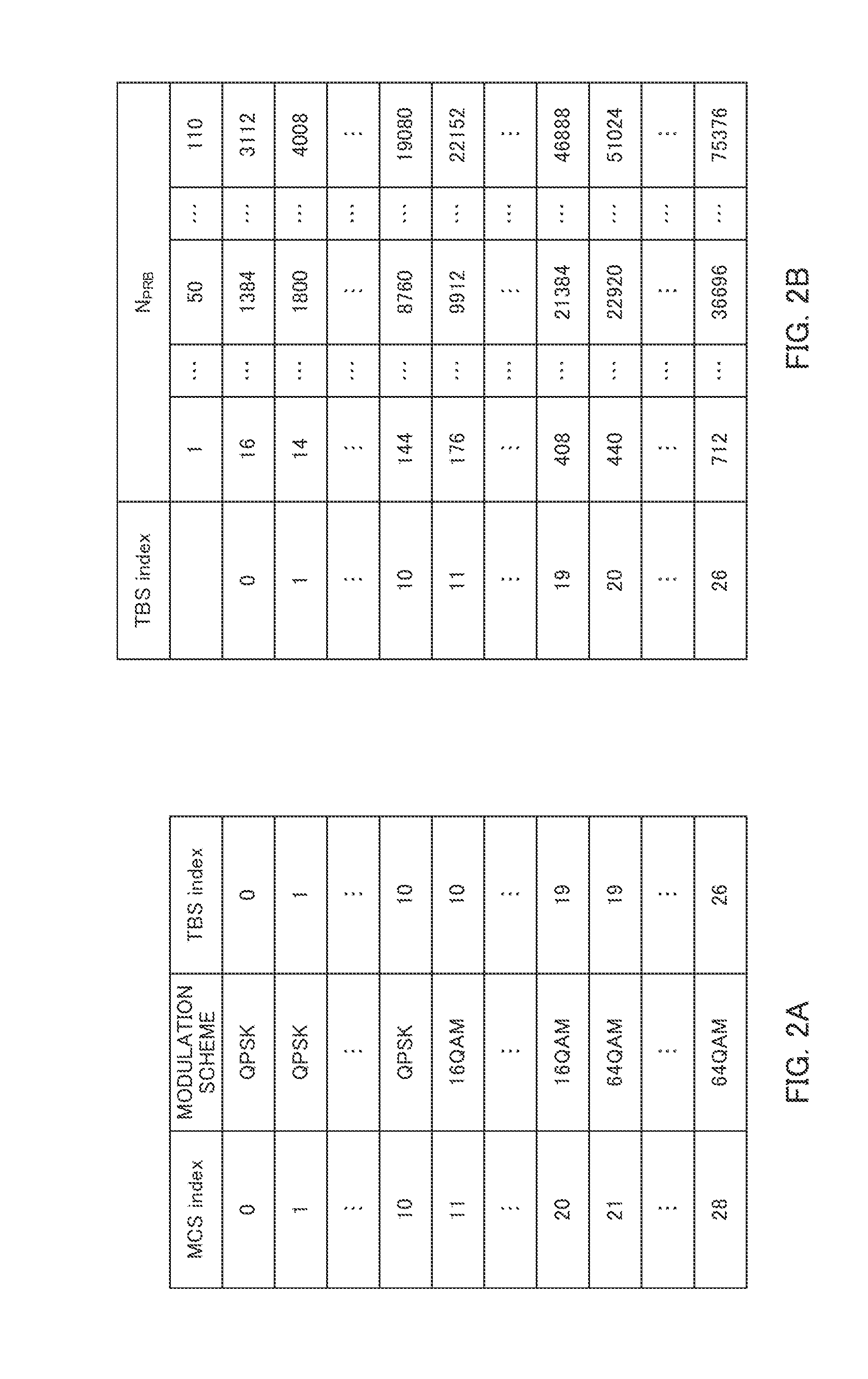Sc-fdma transmission device and transmission method
a transmission device and transmission method technology, applied in power management, wireless commuication services, coding, etc., can solve problems such as inter-symbol interference, and achieve good error rate performan
- Summary
- Abstract
- Description
- Claims
- Application Information
AI Technical Summary
Benefits of technology
Problems solved by technology
Method used
Image
Examples
embodiment 1
[0053]FIG. 5 illustrates major components of transmission apparatus 100 according to the present embodiment. Transmission apparatus 100 shown in FIG. 5 performs the time puncturing and the frequency puncturing. In transmission apparatus 100, determination section 151 determines, according to puncturing determination rules, a ratio between the amount of time puncturing and the amount of frequency puncturing in the total amount of puncturing corresponding to components of encoded data that are punctured in the time puncturing and the frequency puncturing; setting section 152 sets the amount of time puncturing and the amount of frequency puncturing based on the above-mentioned ratio; time puncturing section 102 performs the time puncturing on the encoded data according to the amount of time puncturing; and frequency puncturing section 105 performs the frequency puncturing on the encoded data after the time puncturing according to the amount of frequency puncturing. In this process, acc...
embodiment 2
[0150]A description will also be provided for the case where the frequency puncturing rate is set depending on the number of clusters that are allocated to a transmission apparatus (the number of allocated clusters, hereinafter denoted by NC), according to the present embodiment.
[0151]Reception apparatus 200 (FIG. 7) performs demodulation processing on clusters transmitted from transmission apparatus 100 (FIG. 6) based on channel estimation values derived by means of DMRSs, for example. These DMRSs are mapped to frequency bands allocated to the clusters. Moreover, reception apparatus 200 estimates a channel estimation value (for example, SINR) for each frequency band (sub-carrier) by using three sub-carriers, i.e., the channel estimation target sub-carrier and two nearest sub-carriers on both sides of the channel estimation target sub-carrier, for example. When the channel of a sub-carrier located at the outer end of a cluster is to be estimated, reception apparatus 200 cannot use o...
embodiment 3
[0167]A description will also be provided for the case where the frequency puncturing rate is set depending on the number of antennas used by a reception apparatus according to the present embodiment.
[0168]FIG. 18A illustrates the channel gain when reception apparatus 200 (FIG. 7) receives a signal from transmission apparatus 100 (FIG. 6) via one receiving antenna (i.e., single-antenna reception). In contrast, FIG. 18B illustrates the channel gain after antenna combining when reception apparatus 200 receives a signal from transmission apparatus 100 via a plurality of receiving antennas (the number of receiving antennas 2) (i.e., multi-antenna reception, or antenna-diversity reception).
[0169]As can be seen by comparing FIG. 18A with FIG. 18B, the channel gain after antenna combining obtained by multi-antenna reception shown in FIG. 18B results in a smaller number of dropped sub-carriers which may cause ISI than the channel gain obtained by single-antenna reception shown in FIG. 18A. ...
PUM
 Login to View More
Login to View More Abstract
Description
Claims
Application Information
 Login to View More
Login to View More - R&D
- Intellectual Property
- Life Sciences
- Materials
- Tech Scout
- Unparalleled Data Quality
- Higher Quality Content
- 60% Fewer Hallucinations
Browse by: Latest US Patents, China's latest patents, Technical Efficacy Thesaurus, Application Domain, Technology Topic, Popular Technical Reports.
© 2025 PatSnap. All rights reserved.Legal|Privacy policy|Modern Slavery Act Transparency Statement|Sitemap|About US| Contact US: help@patsnap.com



